Google Guava is a Java tool library provided by Google to facilitate developers to use Java to develop efficient and high-quality applications. Caching technology is an important feature of Guava. Below we will introduce the characteristics, usage and precautions of Guava caching technology.
1. Features of Guava cache
The main features of Guava cache are as follows:
- Multiple cache recycling strategies: Guava supports multiple cache recycling strategies , including based on size, time, or usage.
- Cache data type support: Guava cache supports caching of multiple data types, such as primitive types, objects, collections, etc.
- High performance: Guava cache has the characteristics of high performance, and the underlying implementation adopts a concurrent method.
- Auto-loading: Guava cache supports automatic loading to avoid applications loading large amounts of data at startup.
2. How to use Guava cache
The following will introduce how to use Guava cache. First, you need to introduce the guava-xx.xx.jar package:
import com.google.common.cache.CacheBuilder; import com.google.common.cache.Cache;
Then use CacheBuilder to build the Cache object. The specific code is as follows:
Cache<String, String> cache = CacheBuilder.newBuilder().
maximumSize(1000)
.expireAfterWrite(10, TimeUnit.MINUTES)
.build();The maximumSize() method specifies the maximum capacity of the cache, expireAfterWrite( ) method specifies the cache expiration time. In addition, cache eviction policies can be used to control cache size and stateful management.
Next, you can add data to the cache through the put() method of Cache, and obtain the data in the cache through the get() method. The specific code is as follows:
cache.put("key1", "value1");
String value = cache.get("key1", new Callable < String > () {
@Override
public String call() {
//从数据库或其他数据源加载数据
return "newValue";
}
});In the above code, the first One parameter is the cached key value, and the second parameter is the default value/Callback object. When the specified key cannot be found, the data is loaded from the logic provided in the default value and the loaded data is updated to the cache. middle.
3. Precautions for Guava cache
When using Guava cache, you need to pay attention to the following points:
- To avoid memory overflow: when setting the cache capacity, The amount of data in actual application scenarios must be taken into consideration to avoid memory overflow.
- Choose an appropriate cache recycling strategy: Choose an appropriate cache recycling strategy based on actual usage to minimize data redundancy in the cache.
- Avoid the objective validity period of the cache being too long: Too long a validity period will cause the cached data to become outdated and not meet actual business needs.
4. Conclusion
Through the introduction of this article, we can understand the characteristics, usage and precautions of Guava caching technology. In practical applications, the reasonable application of caching technology can not only improve the performance and efficiency of applications, but also reduce access to back-end data sources, avoid impact on system performance, and improve system availability and maintainability.
The above is the detailed content of Get to know Google Guava caching technology. For more information, please follow other related articles on the PHP Chinese website!
 Memcached缓存技术对于PHP中的Session处理的优化May 16, 2023 am 08:41 AM
Memcached缓存技术对于PHP中的Session处理的优化May 16, 2023 am 08:41 AMMemcached是一种常用的缓存技术,它可以使Web应用程序的性能得到很大的提升。在PHP中,常用的Session处理方式是将Session文件存放在服务器的硬盘上。但是,这种方式并不是最优的,因为服务器的硬盘会成为性能瓶颈之一。而使用Memcached缓存技术可以对PHP中的Session处理进行优化,提高Web应用程序的性能。PHP中的Session处
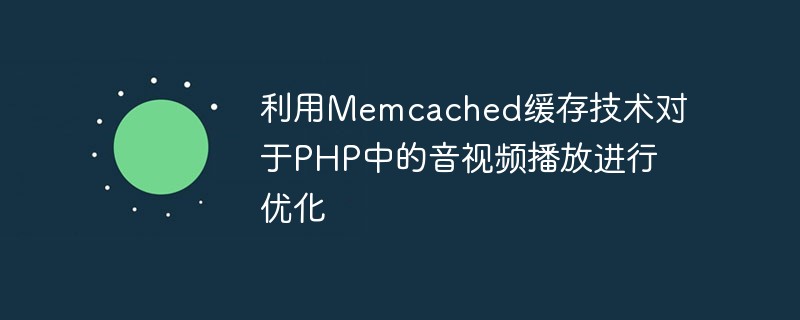 利用Memcached缓存技术对于PHP中的音视频播放进行优化May 17, 2023 pm 04:01 PM
利用Memcached缓存技术对于PHP中的音视频播放进行优化May 17, 2023 pm 04:01 PM随着互联网技术的不断发展,音视频资源已经成为了互联网上非常重要的一种内容形式,而PHP作为网络开发中使用最广泛的语言之一,也在不断地应用于视频和音频播放领域。然而,随着音视频网站的用户日益增加,许多网站已经发现了一个问题:在高并发的情况下,PHP对于音视频的处理速度明显变缓,会导致无法及时播放或者播放卡顿等问题。为了解决这个问题,Memcached缓存技术应
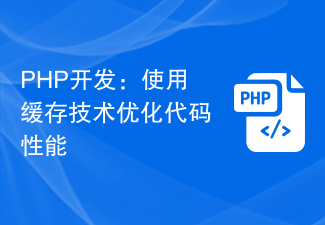 PHP开发:使用缓存技术优化代码性能Jun 15, 2023 pm 02:39 PM
PHP开发:使用缓存技术优化代码性能Jun 15, 2023 pm 02:39 PMPHP是一种脚本语言,常用于Web应用程序开发。随着互联网的迅速发展,Web应用程序的开发也变得越来越复杂,代码量越来越大。因此,优化代码性能变得尤为重要,在这方面,使用缓存技术是一种行之有效的方式。在本文中,我们将探讨PHP开发中使用缓存技术优化代码性能的方法和技巧。什么是缓存技术?首先,让我们了解一下什么是缓存技术。在计算机中,缓存是一种临时存储数据的技
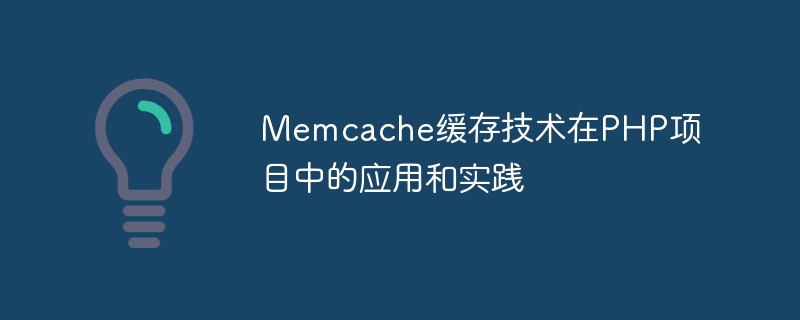 Memcache缓存技术在PHP项目中的应用和实践May 17, 2023 pm 02:10 PM
Memcache缓存技术在PHP项目中的应用和实践May 17, 2023 pm 02:10 PMMemcache是一种开源的、分布式的缓存技术。它通过将数据存储在内存中,极大地提高了数据的访问速度,从而提升了网站的性能和响应速度。在PHP项目中,Memcache缓存技术也被广泛应用,并且取得了很好的效果。本篇文章将深入探讨Memcache缓存技术在PHP项目中的应用和实践。一、Memcache的原理和优势Memcache是一种内存缓存技术,它可以将数据
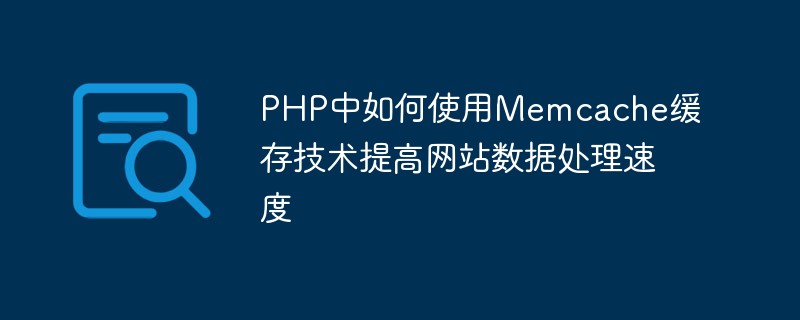 PHP中如何使用Memcache缓存技术提高网站数据处理速度May 15, 2023 pm 10:21 PM
PHP中如何使用Memcache缓存技术提高网站数据处理速度May 15, 2023 pm 10:21 PM随着互联网用户数量的快速增长,网站数据处理速度愈发成为了一个核心问题。Memcache以其高性能和低延迟的优点成为了网站缓存技术中的佼佼者。今天本文就会带你一步一步了解PHP中如何使用Memcache缓存技术来提高网站数据处理速度。Memcache基础知识Memcache是一个高性能的分布式内存对象缓存系统。它可以减少数据库在处理高并发访问时的压力,提高网站
 PHP中为什么需要使用Memcached缓存技术May 15, 2023 pm 10:33 PM
PHP中为什么需要使用Memcached缓存技术May 15, 2023 pm 10:33 PM在现代Web应用中,数据的高效访问对于应用的性能至关重要。PHP作为一种流行的Web开发语言,其在应用中的数据读写性能也成为了十分关注的话题。为了提升PHP应用的性能,很多开发者就开始使用各种各样的缓存技术,其中最为常用的就是Memcached(分布式内存缓存系统)。那么,为什么在PHP应用中使用Memcached缓存技术呢?首先,我
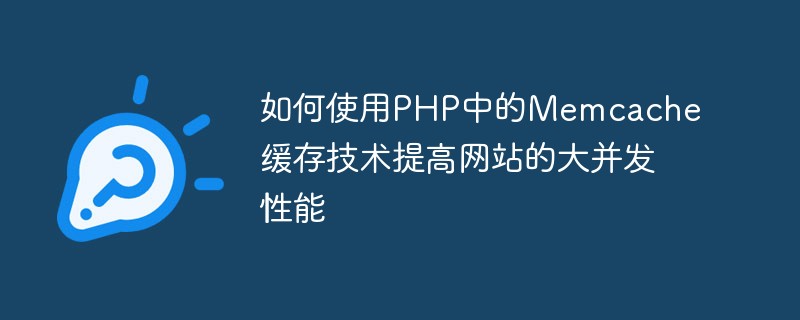 如何使用PHP中的Memcache缓存技术提高网站的大并发性能May 17, 2023 pm 05:00 PM
如何使用PHP中的Memcache缓存技术提高网站的大并发性能May 17, 2023 pm 05:00 PM随着互联网技术的不断发展,网站的用户访问量越来越大,带来的并发访问量也越来越高。为了应对这种高并发访问,常用的手段是使用缓存技术。而在PHP语言中,Memcache缓存技术是一种非常有效的解决方案。Memcache是一种分布式缓存系统,能够将大量的数据缓存在内存中,并能够从内存中快速读取,从而提高网站的响应速度和并发能力。在本文中,我们将介绍如何使用PHP中
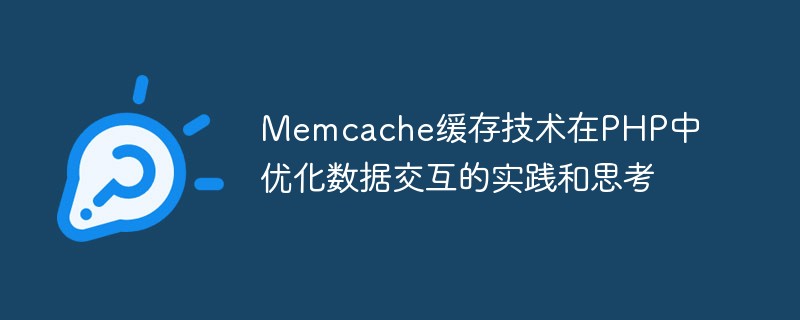 Memcache缓存技术在PHP中优化数据交互的实践和思考May 17, 2023 pm 09:51 PM
Memcache缓存技术在PHP中优化数据交互的实践和思考May 17, 2023 pm 09:51 PMMemcache缓存技术在PHP中优化数据交互的实践和思考在现代的Web应用中,数据交互是一个非常重要的问题,它没有足够的高效性,将会限制Web应用程序的扩展性和性能。为了加快数据交互速度,我们通常的做法是优化数据库的设计、提高硬件的性能和增加服务器容量。但是,这些方法都有一个共同的限制:它们会增加系统的成本。最近几年,Memcache技术在解决这个问题上提


Hot AI Tools

Undresser.AI Undress
AI-powered app for creating realistic nude photos

AI Clothes Remover
Online AI tool for removing clothes from photos.

Undress AI Tool
Undress images for free

Clothoff.io
AI clothes remover

AI Hentai Generator
Generate AI Hentai for free.

Hot Article

Hot Tools

Dreamweaver CS6
Visual web development tools

ZendStudio 13.5.1 Mac
Powerful PHP integrated development environment

Atom editor mac version download
The most popular open source editor

SublimeText3 Mac version
God-level code editing software (SublimeText3)

Safe Exam Browser
Safe Exam Browser is a secure browser environment for taking online exams securely. This software turns any computer into a secure workstation. It controls access to any utility and prevents students from using unauthorized resources.






